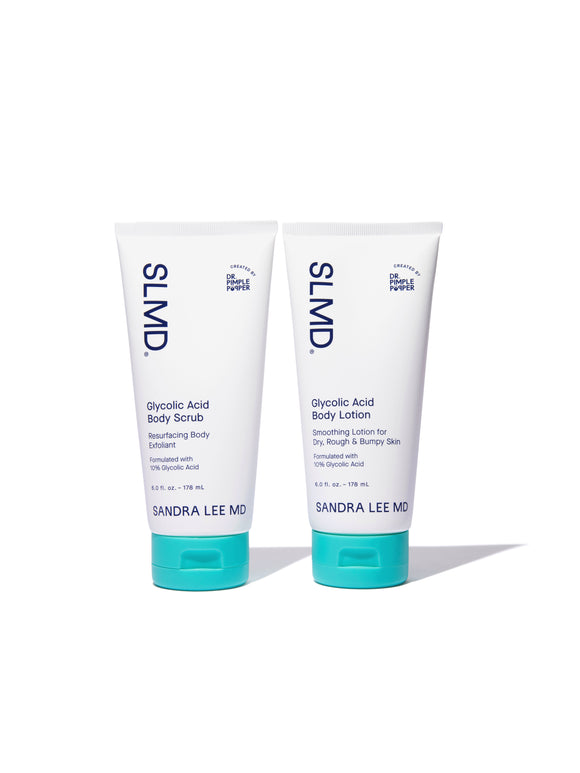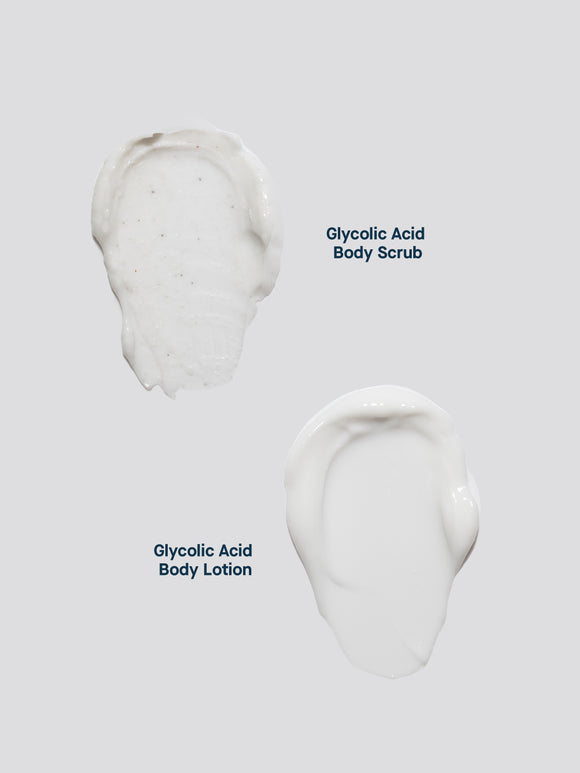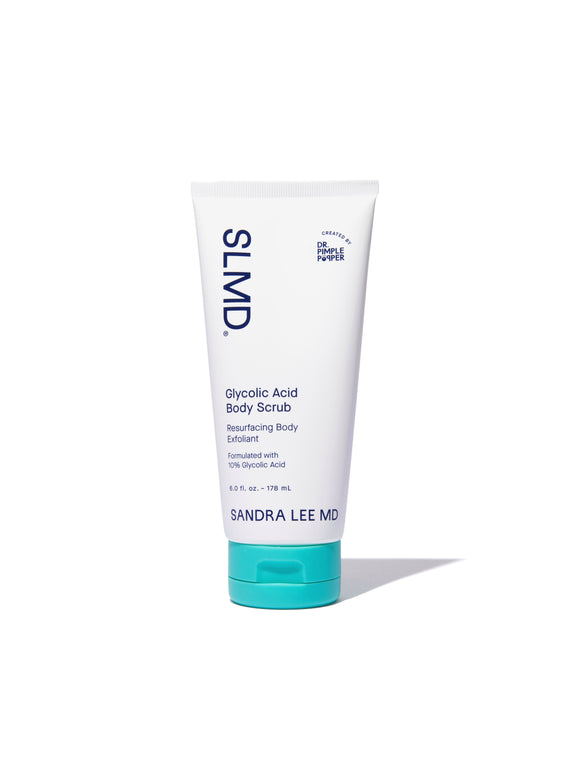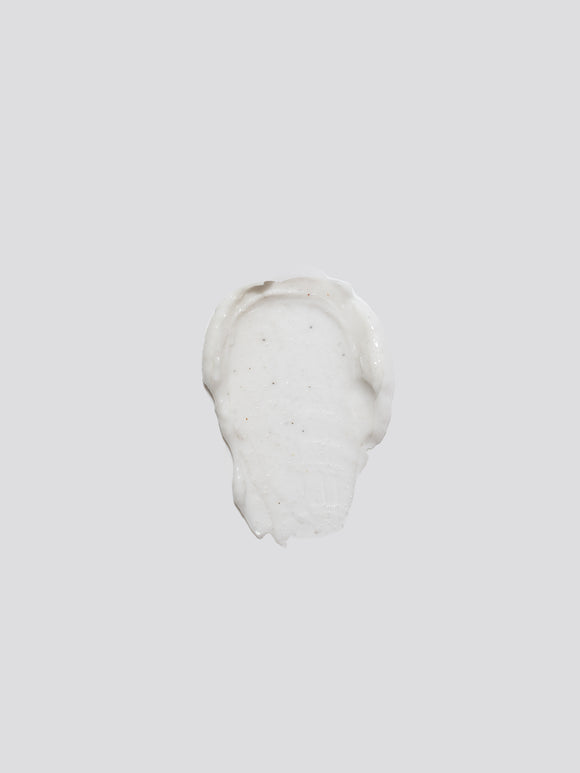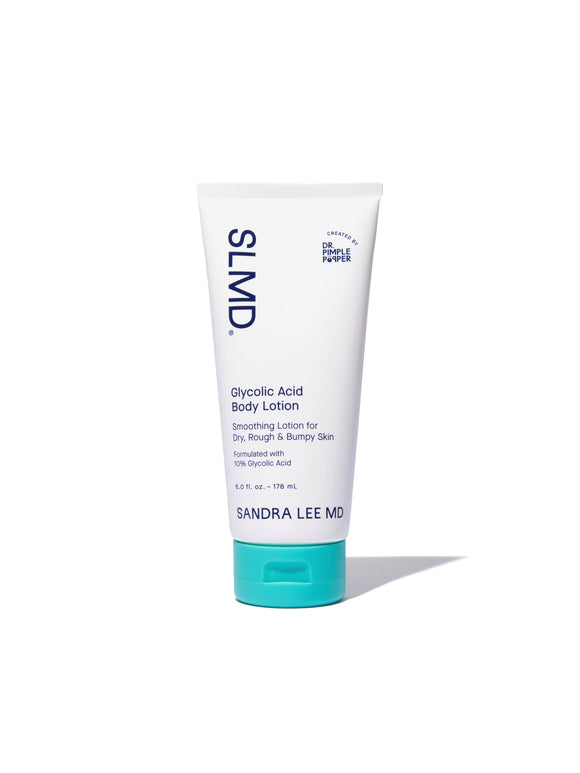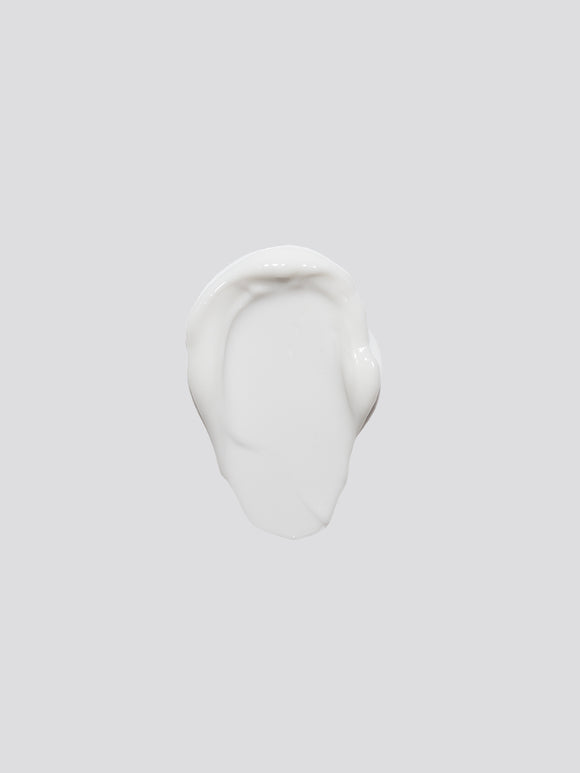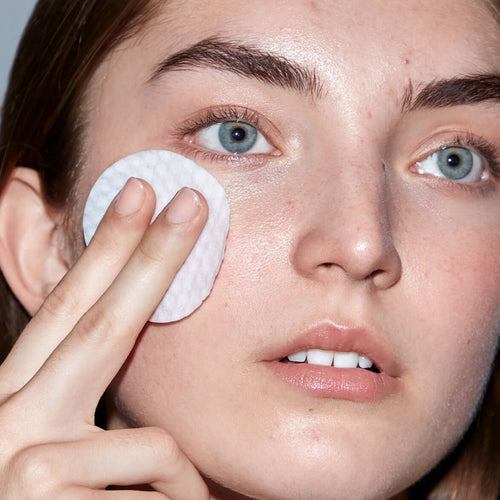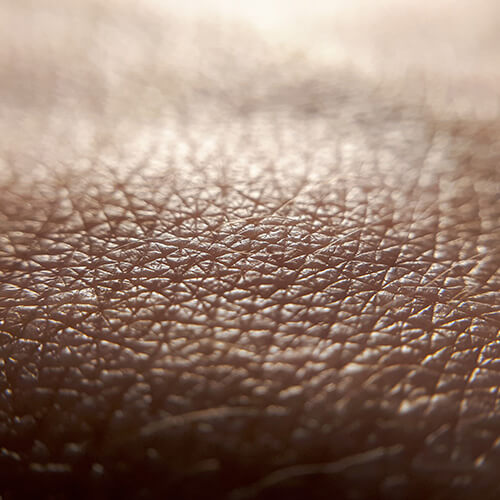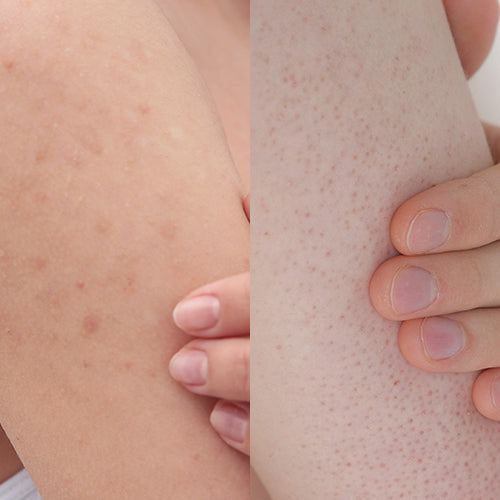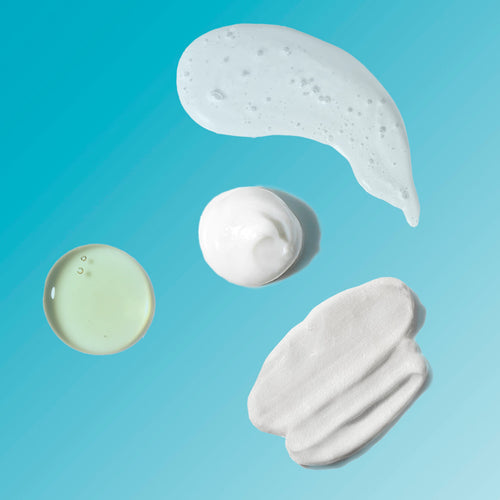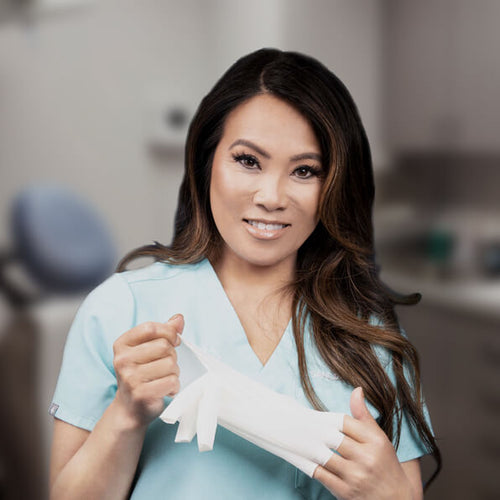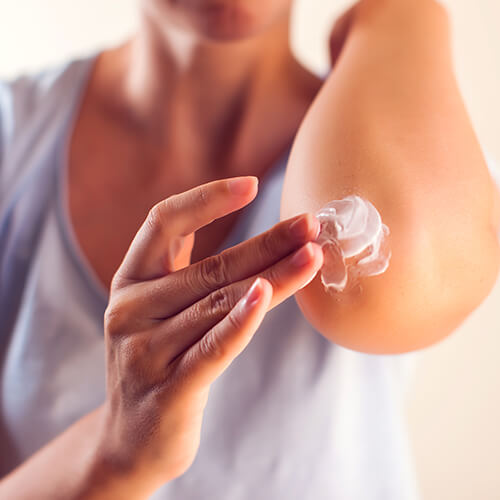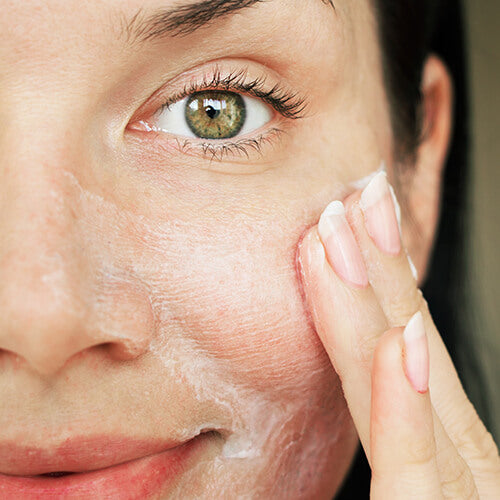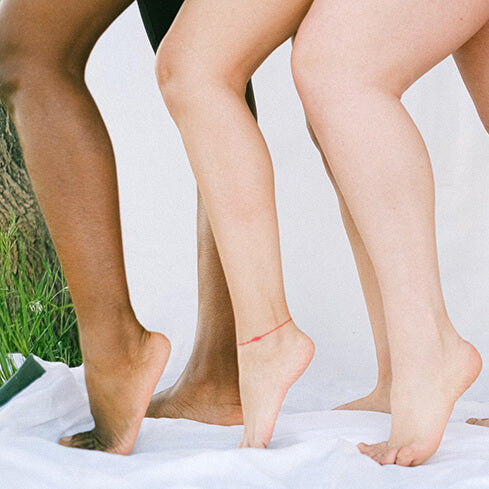
Understanding “Strawberry Skin” aka Keratosis Pilaris
What causes KP — and how do you manage dry, rough bumps on your skin?
Published:
4 minute read
Ever notice small, rough bumps on the backs of your arms, or maybe on your thighs, that don’t seem to behave like pimples or ingrown hairs? You’re not alone. These bumps are incredibly common, and while they’re harmless, they can be confusing and frustrating to deal with.
What you’re likely seeing is keratosis pilaris, often referred to as strawberry skin or chicken skin. According to dermatologist Sandra Lee, MD (aka Dr. Pimple Popper), KP is one of the most common non-acne skin concerns she sees in practice. Below, we’ll break down exactly what KP is, why it happens, what it looks like, and how dermatologists recommend managing it.
Fast Facts: Keratosis pilaris
- KP is a common skin condition involving keratin buildup
- Often referred to as strawberry skin or chicken skin
- Typically appears on the arms, thighs, or buttocks
- Can be managed with the right skincare approach
Article Quick Links
What is keratosis pilaris?
Keratosis pilaris (KP) occurs when excess keratin — a protein that helps form your skin, hair, and nails — builds up inside hair follicles. This buildup forms a hardened plug that blocks the follicle opening, creating the small, rough bumps associated with the condition.
Dermatologists refer to this process as hyperkeratinization. "While we know keratin buildup is central to KP," Dr. Lee notes, "exactly why it happens is still being studied."
There are a couple of leading theories:
- Dysfunctional keratinization: For years, the prevailing theory has been that genetic factors cause skin cells lining the hair follicle to produce too much keratin, leading to follicular blockage.
- Hair shaft involvement: More recent research suggests that abnormal hair growth patterns inside the follicle may trigger inflammation, with keratin buildup occurring as a secondary response.
In other words, keratosis pilaris may begin with the hair follicle itself — not just the surrounding skin — which helps explain why KP behaves differently from acne.
What does keratosis pilaris look like?
KP typically appears as clusters of tiny, firm bumps that feel rough or dry to the touch. They’re often mistaken for pimples, but unlike acne, KP bumps don’t contain pus and aren’t caused by bacteria.
The color can vary depending on skin tone. On lighter skin, bumps may look white or pink with surrounding redness. On deeper skin tones, they may appear brown, purple, or darker than the surrounding skin. In some cases, the area may feel itchy or irritated, especially in dry weather.
The nicknames chicken skin and strawberry skin come from the texture and appearance — similar to plucked poultry skin or the dotted surface of a strawberry.
KP most commonly shows up on:
- Upper arms
- Thighs
- Buttocks
- Back
- Cheeks (especially in children)
The bumps may be sparse or cover larger patches, sometimes resembling a mild rash.
Dr. Pimple Popper's KP Picks
Are there different types of strawberry skin?
While “strawberry skin” is a catch-all term, keratosis pilaris has a few recognized variants based on how it appears and where it shows up.
The two most common include:
- Keratosis pilaris: The classic form, which can range from barely noticeable, flesh-colored bumps to more visible, rough patches.
- Keratosis pilaris rubra: A more inflamed version, often seen in adolescents, where the surrounding skin appears red in addition to the bumps.
Despite these distinctions, the underlying issue — keratin buildup in hair follicles — remains the same.
Who’s more likely to get keratosis pilaris?
"Keratosis pilaris tends to run in families, which strongly suggests a genetic component," says Dr. Lee. Beyond genetics, several factors can make KP more likely:
- Age: It’s most common in children and adolescents, though adults can have it too.
- Dry or sensitive skin: Conditions like eczema or ichthyosis vulgaris are often associated with KP.
- Allergic conditions: People with asthma or hay fever may be more prone.
- Seasonal dryness: KP often worsens in colder, drier months.
KP isn’t caused by poor hygiene, and it’s not contagious.
How do you treat keratosis pilaris?
Keratosis pilaris isn’t dangerous, but many people want to improve its texture and appearance. While there’s no permanent cure, dermatologists generally agree that KP responds best to consistent exfoliation paired with skin-barrier support.
Exfoliating ingredients help loosen and remove excess keratin from the follicle, while moisturizers help keep the skin calm and resilient. Supporting the skin barrier is especially important, as over-exfoliating can worsen dryness and irritation.
Try: SLMD Glycolic Acid Body Scrub, Glycolic Acid Body Lotion, also available together in the SLMD Body Smoothing System.
If over-the-counter options aren’t giving you the results you want, a dermatologist may discuss in-office treatments such as microdermabrasion or laser therapy.
Dr. Pimple Popper answers questions about KP
Q: Is strawberry skin the same as keratosis pilaris?
A: Strawberry skin is a nickname, not a medical diagnosis. In many cases, it refers to keratosis pilaris, though other conditions can sometimes look similar.
Q: Is keratosis pilaris acne?
A: No, KP is not acne. It doesn’t involve clogged oil glands or bacteria, and acne treatments don’t always help.
Q: Can keratosis pilaris go away?
A: KP often improves with age and consistent skincare, but it can be a long-term condition for some people.
Q: When should you see a dermatologist for KP?
A: If strawberry skin bumps are painful, worsening, or not responding to basic skincare, it’s a good idea to consult a dermatologist for an accurate diagnosis.

Dr. Lee's Last Word
Keratosis pilaris, often called strawberry skin, is one of the most common skin concerns I see in my practice. While it isn’t serious, the rough texture can be frustrating. With consistent exfoliation and moisturization, most people are able to manage it very effectively.



